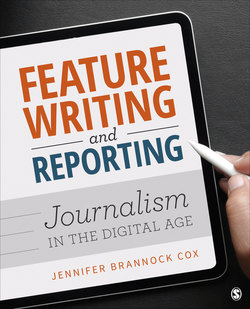Читать книгу Feature Writing and Reporting - Jennifer Brannock Cox - Страница 67
На сайте Литреса книга снята с продажи.
Investigations and Fact-Checking
ОглавлениеThe rise of the internet as a news tool has made it even more crucial for journalists to embrace watchdog journalism—the use of dogged reporting to protect citizens and prevent corruption and misinformation from negatively impacting society. As we discussed in Chapter 1, the internet has become a free and simple way to produce and distribute fake news and false information. Readers expect journalists in the Digital Age to fight back by rooting out the sources of misinformation and deception and providing the truth through investigative reporting.
Journalists produce investigative features to hold those in power accountable. These news features may be as simple as monitoring and publishing restaurant health inspection results in your community so residents know where it may be unsafe to eat. They may also include deeper investigations into ongoing problems, tracking their results and checking in with people who are affected by the issue.
The fact-checking website PolitiFact uses an alternative storytelling form to fulfill its watchdog function. The organization’s “Truth-O-Meter” assesses statements from politicians and leaders, marking them along a spectrum of truth using labels such as “True,” “Half True,” “Mostly False” and “Pants on Fire” (meaning the statement is completely false). Reporters post a statement made by a person or group, rank it along the spectrum and link it to a story explaining why the statement is true or false and how they came to that conclusion.15
Many news consumers in the Digital Age are experiencing a phenomenon phycologists and media analysts refer to as news fatigue—the feeling of being overwhelmed by the amount of news coverage, typically in reference to a single issue, resulting in feelings of exhaustion or depression. A 2018 study found that almost 70% of Americans felt news fatigue, largely stemming from the amount of coverage devoted to the 2016 presidential election.16 One solution is for media to focus more on constructive journalism—reporting that does not focus solely on negativity and problems but rather helps readers understand issues more fully and look toward solutions. These types of investigative features shy away from telling readers what to think. Instead, journalists recognize the impact of their reporting on society and use their work to provide insight on what is going on in the community and empower citizens to recognize their roles in their communities and spur change.17 The United Kingdom–based Positive News Magazine capitalizes on readers’ hunger for constructive journalism. The publication delivers short feature stories that demonstrate how people are addressing problems rather than dwelling on the problems themselves. In this article excerpt, reporter Gavin Haines briefly addresses a conflict, then immediately shifts to profiling a promising program and individuals who are working toward a solution:
The debate has raged in recent months: is the climate crisis being given due prominence on school curriculums?
Four young students at Cheney school in Oxford think not, and so in March launched a petition calling for more lessons on the subject. The petition has since been signed by almost 82,000 people.
Though climate change is taught in science and geography lessons, critics say that isn’t enough. But rather than waiting for the UK government to integrate the subject into the curriculum further, teachers are taking matters into their own hands by enrolling on the United Nations’ Climate Change Teacher Academy.18
We will learn about solutions-based stories like these in greater depth in Chapter 8.
